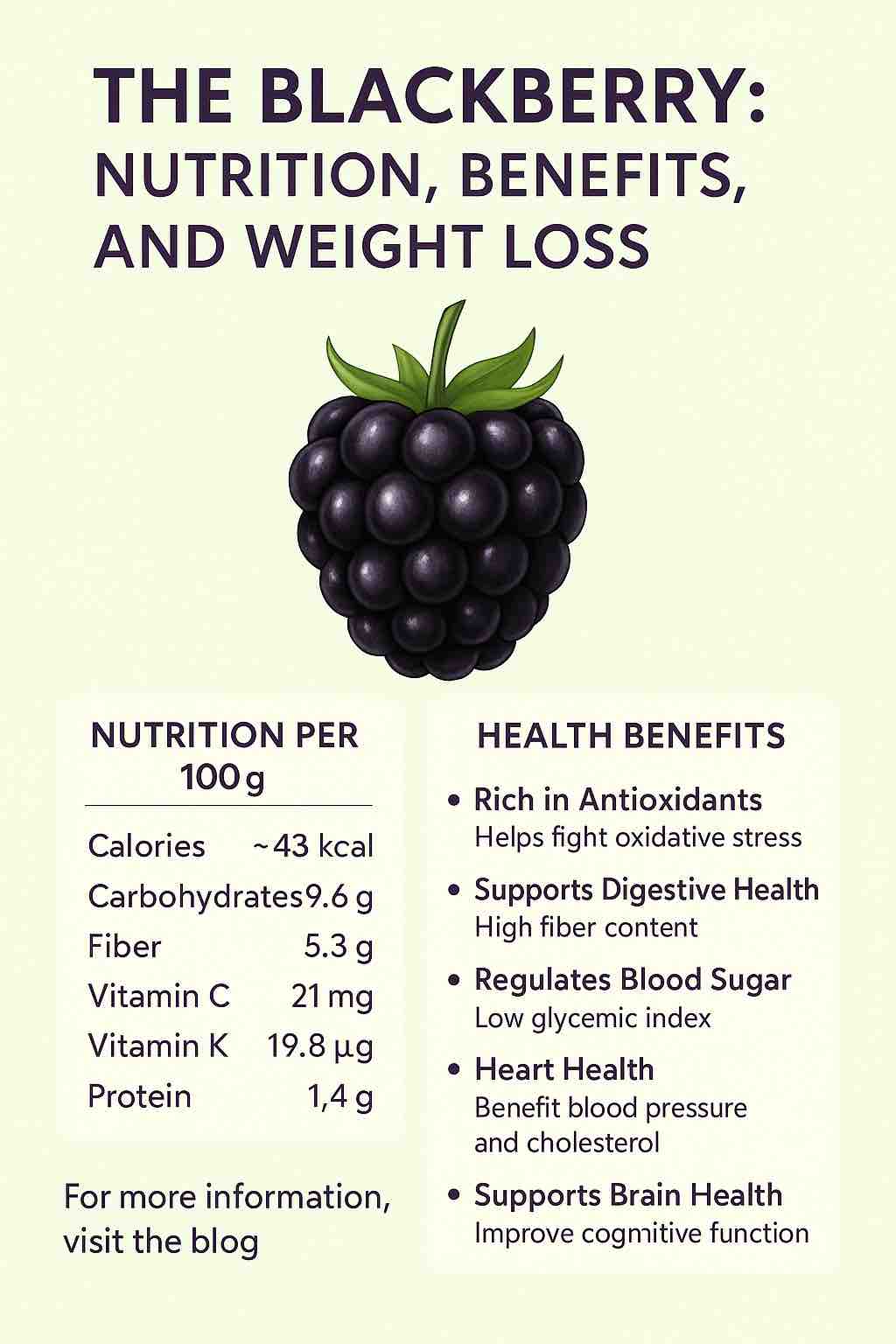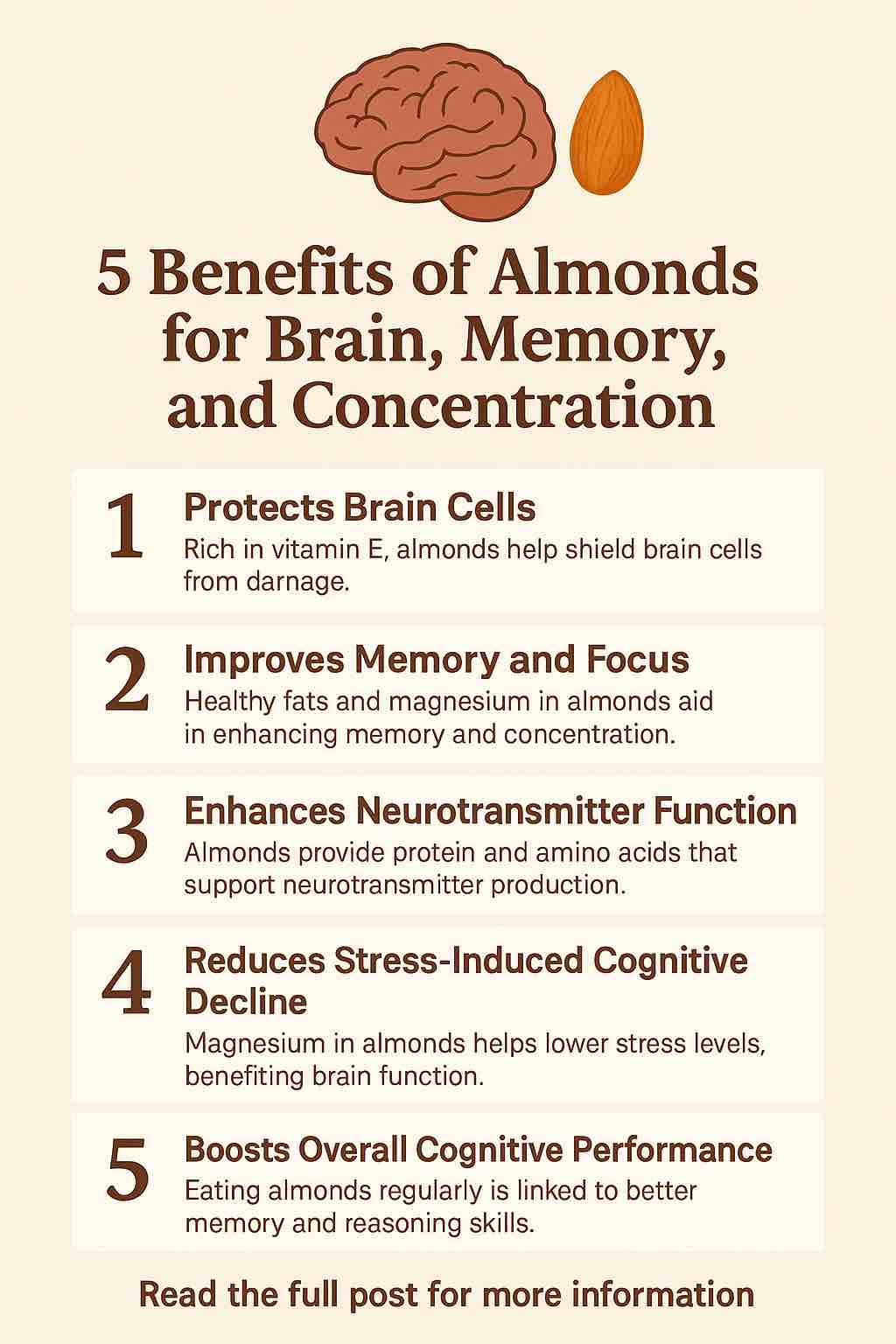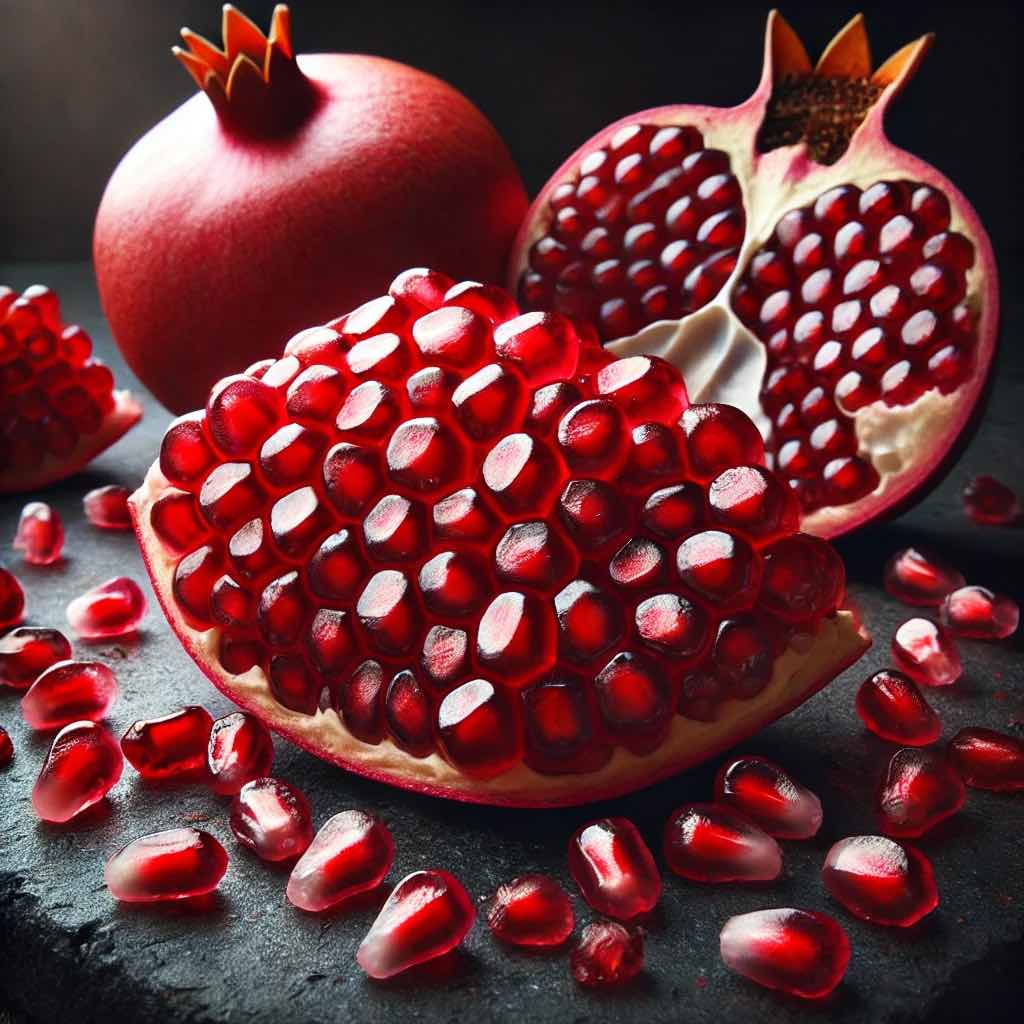
When it comes to superfoods, blackberries are often overshadowed by flashier fruits like blueberries or acai berries. However, these dark, juicy gems deserve a spotlight of their own. Packed with nutrients, antioxidants, and fiber, blackberries are more than just a delicious summer treat. In this comprehensive guide, we explore everything you need to know about blackberries—their nutritional profile, impressive health benefits, and practical, science-backed ways they can support your weight loss journey.
What Are Blackberries?
Blackberries are small, dark purple-black fruits belonging to the Rubus genus of the Rosaceae family. Often found growing wild in hedgerows or cultivated in gardens, they have a sweet-tart flavor and a slightly crunchy texture due to their tiny seeds. Available fresh during the summer months and frozen year-round, blackberries are a versatile fruit that can be incorporated into countless dishes.
Nutritional Powerhouse: What’s Inside a Blackberry?
Let’s start with the numbers. Per 100 grams (approximately 3.5 ounces) of blackberries, you get:
- Calories: ~43 kcal
- Carbohydrates: 9.6 g
- Sugars: 4.9 g
- Fiber: 5.3 g
- Protein: 1.4 g
- Fat: 0.5 g
- Vitamin C: 35% of the Daily Value (DV)
- Vitamin K: 25% of the DV
- Manganese: 32% of the DV
What makes blackberries stand out is their high fiber content and low calorie density, which makes them incredibly filling and ideal for those watching their weight. Additionally, they’re rich in polyphenols and anthocyanins, compounds known for their antioxidant and anti-inflammatory properties.
Health Benefits of Blackberries
1. Rich in Antioxidants
Blackberries are brimming with powerful antioxidants, particularly anthocyanins, which give them their dark color. These compounds help neutralize free radicals, potentially reducing the risk of chronic diseases like cancer, diabetes, and heart disease.
2. Boosts Digestive Health
Thanks to their high fiber content, blackberries support healthy digestion. Fiber adds bulk to the stool and facilitates regular bowel movements. Additionally, fiber feeds beneficial gut bacteria, which play a role in metabolism and immune function.
3. Supports Heart Health
Blackberries contain heart-friendly nutrients like potassium, magnesium, and fiber. These nutrients help lower blood pressure, improve cholesterol levels, and enhance overall cardiovascular health.
4. Enhances Brain Function
Research suggests that the antioxidants in blackberries may help reduce age-related cognitive decline. Polyphenols improve communication between brain cells and reduce inflammation, which is associated with neurological disorders.
5. Improves Skin and Bone Health
With vitamins C and K, as well as manganese, blackberries contribute to collagen formation, wound healing, and bone strength. Their anti-inflammatory properties also promote clearer skin and reduce oxidative stress.
How Blackberries Help With Weight Loss
Blackberries check all the boxes when it comes to weight-friendly foods. Here are five science-backed ways they support weight loss:
1. High Fiber = Long-Lasting Fullness
With over 5 grams of fiber per 100 grams, blackberries keep you full for longer. This satiety can help reduce overall calorie intake, especially when consumed between meals or as a dessert replacement.
2. Low in Calories, High in Volume
Blackberries have a low energy density, meaning they provide fewer calories per gram. This allows you to eat a generous portion without significantly increasing your caloric intake.
3. Low Glycemic Impact
The sugars in blackberries are absorbed slowly, leading to stable blood sugar levels and reduced insulin spikes. This helps control cravings and prevents energy crashes that often lead to snacking.
4. Promotes a Healthy Gut
A healthy gut microbiome is increasingly linked to effective weight management. The fiber in blackberries acts as a prebiotic, supporting the growth of good bacteria that influence metabolism and fat storage.
5. Hydration Boost
Blackberries are composed of over 85% water. Staying hydrated can aid in satiety and support metabolic functions, making water-rich fruits like blackberries ideal for weight loss.
5 Delicious and Practical Ways to Add Blackberries to Your Diet
Looking for easy ways to include blackberries in your daily meals? Here are some tasty and practical ideas:
1. Blackberry Smoothie
Blend blackberries with Greek yogurt, spinach, banana, and a spoonful of chia seeds for a filling, fiber-packed breakfast.
2. Yogurt Parfait
Layer blackberries with plain yogurt, granola, and a drizzle of honey for a quick snack or dessert.
3. Frozen Treats
Freeze blackberries and enjoy them as a low-calorie treat on hot days. You can also use them in homemade popsicles.
4. Salad Topper
Add fresh blackberries to a mixed greens salad with goat cheese, walnuts, and a balsamic vinaigrette for a tangy-sweet flavor profile.
5. Infused Water
Crush a handful of blackberries and mix them with mint leaves and water for a refreshing, antioxidant-rich drink.
Final Thoughts
Blackberries are more than just a tasty fruit—they’re a nutrient-rich powerhouse that supports overall health and effective weight loss. Whether you enjoy them fresh, frozen, or blended into your favorite meals, their health benefits are undeniable. With low calories, high fiber, and potent antioxidants, blackberries are a smart and delicious addition to any weight loss plan.
So next time you’re at the grocery store or farmer’s market, consider picking up a basket of blackberries. Your body (and your taste buds) will thank you.
FAQs
- Are blackberries good for weight loss?
Yes, blackberries are excellent for weight loss due to their high fiber content, low calories, and ability to promote satiety while supporting stable blood sugar levels. - How many calories are in one cup of blackberries?
One cup (approximately 144 grams) of raw blackberries contains around 62 calories, making them a low-calorie snack option. - Can I eat blackberries every day?
Absolutely. Eating blackberries daily can support digestion, heart health, and immune function, provided they’re part of a balanced diet. - Do blackberries have a lot of sugar?
No, blackberries are relatively low in sugar compared to other fruits—about 7 grams per cup—and have a low glycemic index. - Are frozen blackberries as healthy as fresh ones?
Yes, frozen blackberries retain most of their nutrients and antioxidants, especially if they’re flash-frozen soon after harvesting. - What’s the best time to eat blackberries for weight loss?
Blackberries are great as a mid-morning or mid-afternoon snack, or as part of breakfast to curb hunger and maintain energy levels. - Do blackberries help with digestion?
Yes, they are high in dietary fiber, which promotes regular bowel movements and supports a healthy gut microbiome. - Are blackberries keto-friendly?
In moderation, yes. A half-cup of blackberries has about 3 net carbs, making them suitable for low-carb or ketogenic diets. - Can blackberry seeds be eaten?
Yes, the seeds are edible and contain fiber and beneficial fatty acids. However, people with diverticulitis or digestive issues may prefer seedless options. - How should blackberries be stored to stay fresh?
Store fresh blackberries in the refrigerator and rinse them just before eating. For longer storage, freeze them in a single layer on a tray before transferring to a bag.













